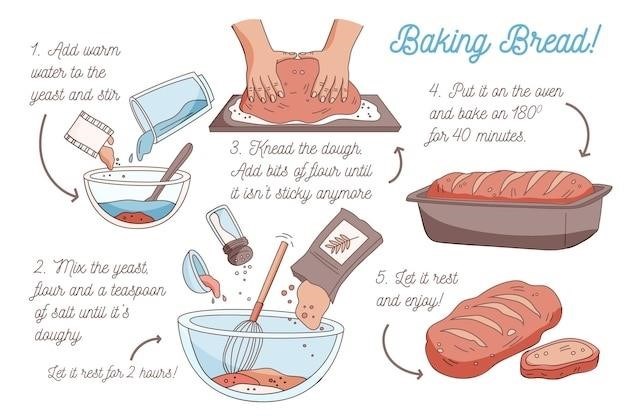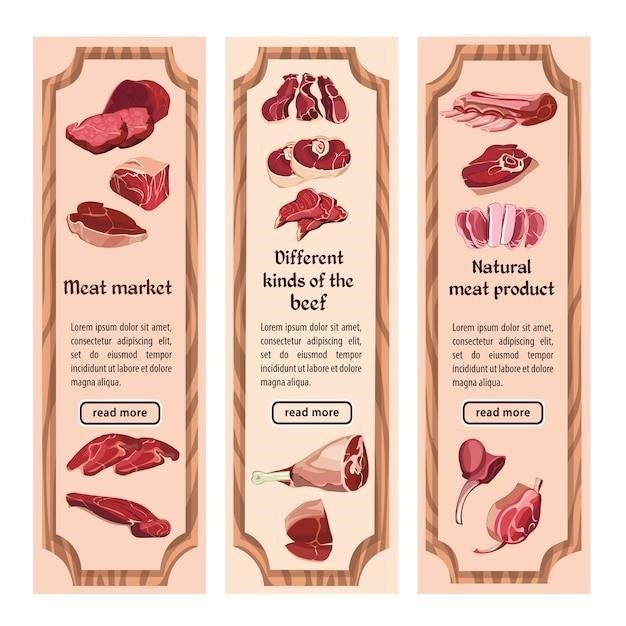
Understanding Beef Cuts
Beef cuts refer to the different parts of a cow that are used for meat. Understanding beef cuts is essential for choosing the right cut for your desired cooking method and dish. Different cuts vary in tenderness, flavor, and suitability for various cooking techniques.
Beef Anatomy
A cow’s body is divided into various sections, each with distinct muscle groups that contribute to the different cuts of beef. The primal cuts, which are the initial large sections of the carcass, are further divided into subprimal cuts, resulting in the familiar cuts of beef we see in the grocery store. The muscles that are used more frequently, such as those in the legs and shoulders, tend to be tougher, while muscles that are less active, like those in the loin and rib, are generally more tender. Understanding this anatomy helps in selecting the appropriate cuts for different cooking methods.
Primal Cuts
Primal cuts are the large, initial sections of a beef carcass that are separated during the butchering process. These cuts serve as the foundation for the various subprimal cuts that are commonly found in supermarkets and butcher shops. The primary primal cuts include the chuck, rib, loin, round, brisket, flank, and short plate. These cuts are further divided into subprimal cuts, which are then trimmed and prepared into the steaks, roasts, and ground beef that we recognize. Each primal cut has its unique characteristics in terms of tenderness, flavor, and suitability for specific cooking methods.
Subprimal Cuts
Subprimal cuts are the smaller, more refined cuts of beef that are derived from the primal cuts. These cuts are further broken down from the larger primal sections and are often named according to their specific location within the carcass. Examples of subprimal cuts include the chuck roast, ribeye steak, sirloin tip roast, and top round steak. These cuts are more readily available in retail markets and are often the cuts that consumers choose for their meals. Subprimal cuts are categorized based on their tenderness, flavor, and suitability for different cooking methods, which helps consumers make informed choices for their culinary needs.
Tenderness and Flavor
The tenderness and flavor of beef cuts are influenced by several factors, including the muscle’s location on the animal, the amount of marbling, and the age of the animal. Muscles that are less frequently used, such as those in the loin and rib sections, are generally more tender. Marbling, which refers to the intramuscular fat within the meat, contributes to tenderness and flavor. The amount of marbling is often graded by the USDA, with higher grades indicating more marbling and a more tender and flavorful cut of beef. The age of the animal also plays a role, with older animals often having tougher meat. Understanding these factors can help consumers choose the right cut of beef for their desired level of tenderness and flavor.
Cooking Methods
Different cuts of beef are best suited for different cooking methods. Tender cuts, like ribeye and tenderloin, are ideal for grilling, broiling, or pan-searing, as they require minimal cooking time. Tougher cuts, such as chuck roast or brisket, benefit from slow cooking methods like braising or stewing, which break down the connective tissues and make the meat more tender. Ground beef is versatile and can be used for burgers, meatballs, or chili. Some cuts, like flank steak, are best suited for marinating and grilling, as they are flavorful but can be tough if not cooked properly. Selecting the appropriate cooking method for each cut ensures optimal tenderness, flavor, and texture in the final dish.
Identifying Cuts of Beef
Familiarizing yourself with beef cut charts and descriptions is crucial for selecting the right cut for your culinary needs.
Beef Cut Chart
A beef cut chart is a visual representation of the different cuts of beef, typically depicted on a diagram of a cow. These charts usually include the names of each cut, their location on the animal, and sometimes additional information like recommended cooking methods or lean designations. Charts for foodservice often include IMPS/NAMP numbers, which are standardized codes used to identify cuts for ordering purposes;
You can find beef cut charts online, at butcher shops, or in cookbooks. They are invaluable tools for understanding the various cuts of beef and making informed choices for your meals.
Understanding the Chart
Beef cut charts typically follow a consistent layout, often depicting a side of beef with the different primal and subprimal cuts labeled. The chart may include a key with symbols or colors representing different factors, such as tenderness, fat content, or recommended cooking methods. Understanding the chart involves recognizing the different primal cuts and their corresponding subprimal cuts, which will help you identify the best options for your needs.
Pay attention to the location of each cut on the chart, as this can indicate its tenderness and flavor. Cuts from the loin and rib sections, for example, are generally more tender because they come from muscles that are not heavily used. Understanding the chart will help you make informed decisions about what cuts to choose based on your desired taste and cooking method.
Cut Descriptions
Beef cut descriptions provide detailed information about each cut’s characteristics, including its tenderness, flavor, and recommended cooking methods. They often include visual representations, such as photos or illustrations, to help you visualize the cut. Descriptions might highlight the cut’s marbling, which refers to the amount of fat interspersed throughout the muscle, as this significantly impacts tenderness and flavor.
Some descriptions might specify the cut’s ideal cooking method, such as grilling, roasting, or braising. This information helps you choose the right cut for your desired dish. For example, a cut described as ideal for grilling might be tender enough to cook quickly over high heat, while a cut recommended for braising might require longer, slower cooking in liquid to become tender.
Choosing the Right Cut
Selecting the right cut of beef depends on your cooking method and desired outcome.
Consider Your Preferences
When selecting a cut of beef, your personal taste preferences are paramount. Consider the following factors⁚
- Tenderness⁚ Some cuts are naturally more tender than others. If you prefer a tender steak, choose cuts like ribeye or filet mignon. For less tender cuts, braising or slow cooking is recommended.
- Fat Content⁚ Marbling, the intramuscular fat in beef, contributes to flavor and tenderness. Higher marbling levels are typically found in cuts like ribeye and prime rib. For a leaner option, choose cuts like flank or sirloin.
- Flavor⁚ Different cuts of beef have distinct flavor profiles. Cuts from the loin and rib are generally milder and more flavorful, while cuts from the chuck and round have a stronger, more robust flavor.
- Budget⁚ Prime cuts, such as ribeye and filet mignon, are typically more expensive than less tender cuts like chuck or round. Consider your budget when choosing a cut.
By considering these preferences, you can narrow down your options and choose a cut that best suits your culinary needs.
Matching Cuts to Cooking Methods
The success of your beef dish largely depends on matching the right cut to the appropriate cooking method. Consider the following guidelines⁚
- Tender cuts⁚ Cuts like filet mignon, ribeye, and tenderloin are ideal for quick cooking methods like grilling, pan-searing, or broiling. They retain their tenderness and juicy flavor when cooked quickly at high temperatures.
- Less tender cuts⁚ Cuts like chuck, brisket, and round benefit from slower cooking methods such as braising, stewing, or slow roasting. These methods break down the tougher muscle fibers, resulting in tender and flavorful meat.
- Cuts for grinding⁚ Certain cuts, like chuck and round, are well-suited for grinding into ground beef for burgers, meatballs, and other dishes.
- Cuts for slicing⁚ Cuts like flank and skirt are often sliced thinly against the grain for stir-fries, fajitas, or other dishes where quick cooking is desired.
By understanding the relationship between beef cuts and cooking methods, you can ensure a delicious and satisfying outcome for your culinary creations.
Beef Cuts for Different Dishes
Choosing the right beef cut for your desired dish is crucial for achieving optimal flavor and texture. Here are some popular beef cuts and their ideal applications⁚
- Steaks⁚ Rib eye, New York strip, filet mignon, and T-bone are excellent choices for grilled or pan-seared steaks. Their marbling and tenderness make them perfect for showcasing the natural beef flavor.
- Roasts⁚ Rib roast, chuck roast, and rump roast are well-suited for slow roasting. They become incredibly tender and flavorful after a long cooking process.
- Ground beef⁚ Chuck and round are commonly used for ground beef, which is versatile for burgers, meatballs, chili, and other dishes.
- Stir-fries⁚ Flank steak and skirt steak are thin and flavorful cuts that work well for stir-fries. Their texture holds up well to quick cooking and slicing.
- Braises⁚ Brisket, chuck, and short ribs are perfect for braising. Their tough muscle fibers break down during long, slow cooking, resulting in melt-in-your-mouth tenderness.
By understanding the characteristics of different beef cuts, you can choose the ideal option for your culinary creations, ensuring a delicious and satisfying outcome.
Cooking Tips
Mastering the art of cooking beef involves a few essential tips that elevate your culinary creations. From proper preparation to achieving optimal doneness, these techniques ensure delicious and flavorful results.
Preparing Beef for Cooking
Before embarking on your culinary journey with beef, proper preparation is key to unlocking its full potential. The first step involves trimming excess fat and removing any tough membranes or silver skin. These elements can hinder tenderness and impact the overall flavor of your dish. For those seeking a more tender outcome, consider marinating the beef in a flavorful mixture of herbs, spices, and liquids. This process not only infuses the meat with delicious aromas but also helps to break down tough proteins, resulting in a more succulent experience.
Additionally, consider the specific cut of beef you’ve chosen. For instance, if you’re working with a tougher cut like chuck roast, consider cubing it into smaller pieces. This not only aids in even cooking but also allows for a more consistent texture throughout the dish. Remember, a little time spent on preparation goes a long way in ensuring a delicious and satisfying culinary experience.
Cooking Time and Temperature
The art of cooking beef lies in achieving the perfect balance of time and temperature. It’s crucial to understand that different cuts of beef require varying cooking times and internal temperatures to reach optimal doneness. A meat thermometer is your best friend in this process, ensuring that your beef is cooked to your desired level of tenderness and safety. For instance, a rare steak typically reaches an internal temperature of 125-130°F, while a well-done steak requires a temperature of 160°F or above.
Always ensure that your beef is cooked to a safe internal temperature to prevent foodborne illnesses. Remember that cooking times can vary depending on the thickness of the cut and the method of cooking. Consult reliable sources or recipe guides for specific recommendations for your chosen cut and cooking method. By mastering the art of timing and temperature, you’ll unlock the full potential of your beef, creating a flavorful and satisfying culinary experience.
Resting Beef
While it might seem counterintuitive, resting your beef after cooking is a crucial step for achieving optimal results. This simple act allows the juices to redistribute throughout the meat, resulting in a more tender and flavorful final product. Think of it as a chance for the beef to relax and recover from the heat. The recommended resting time varies depending on the cut and size of the beef. For smaller cuts, a 5-10 minute rest is usually sufficient. Larger roasts or steaks may require a longer rest, up to 30 minutes, to ensure even distribution of juices.
To rest your beef, simply transfer it to a cutting board and loosely cover it with aluminum foil. The foil creates a warm and moist environment, preventing the beef from cooling down too quickly. During the resting period, the juices will redistribute throughout the meat, resulting in a more tender, juicy, and flavorful outcome. Resist the urge to carve into your beef immediately after cooking. Patience is key! Allowing the beef to rest will reward you with a culinary masterpiece that will impress your taste buds.

Beef Resources
For more information and guidance on beef cuts and cooking, there are numerous online resources available. These include websites dedicated to beef, butcher shop recommendations, and comprehensive beef cut charts that can help you navigate the world of beef.
Beef Cut Charts Online
The internet is a treasure trove of information when it comes to beef cuts. Numerous websites offer comprehensive beef cut charts, providing detailed diagrams and descriptions of various cuts. These charts are invaluable for understanding the different primal and subprimal cuts, their characteristics, and recommended cooking methods. Many online cut charts are interactive, allowing you to click on specific cuts to learn more about them. Some sites even provide information on the origin of each cut, helping you visualize where it comes from on the animal. For example, “Its What’s For Dinner” offers a comprehensive chart for foodservice, including the IMPS/NAMP number for each cut, order specifications, and a cut tree. Other websites, like “Hunter Valley Premium Meats,” provide free downloadable charts for beef, lamb, and pork, making it easy to reference and learn about different cuts. The availability of these online resources empowers you to make informed choices about your beef cuts, ensuring you select the perfect cut for your culinary creations.
Butcher Shop Recommendations
While online resources provide valuable information, nothing beats the expertise of a skilled butcher. Butcher shops are a wealth of knowledge when it comes to beef cuts. They can guide you through the different options, offer personalized recommendations based on your preferences and cooking methods, and even custom cut the meat to your exact specifications. Local butchers are passionate about their craft and take pride in providing high-quality cuts. They can help you identify cuts that might not be readily available in supermarkets, such as specific subprimal cuts or cuts that are less common in your region. For example, “Hanovers Local Butcher & Deli,” a family-owned business, boasts a wide variety of products and offers personalized service to help customers choose the right cuts. Don’t hesitate to engage with your local butcher – they are a valuable resource for learning about beef cuts and ensuring a successful culinary experience.
Beef Industry Websites
For a comprehensive understanding of beef cuts, exploring beef industry websites is a great resource. These websites often provide detailed information about different cuts, their characteristics, and recommended cooking methods. They may also offer educational materials, such as infographics, videos, and articles, that delve into the science behind beef production and quality. For instance, the “Certified Angus Beef” website highlights the brand’s commitment to quality, emphasizing its ten standards for exceptional flavor, tenderness, and juiciness. Additionally, websites like “Beef Its Whats For Dinner” offer cut charts with IMPS/NAMP numbers, order specifications, and cut trees, providing a detailed breakdown of various beef cuts for foodservice professionals. These websites are valuable tools for expanding your knowledge and ensuring you make informed choices when selecting your next beef cut.




